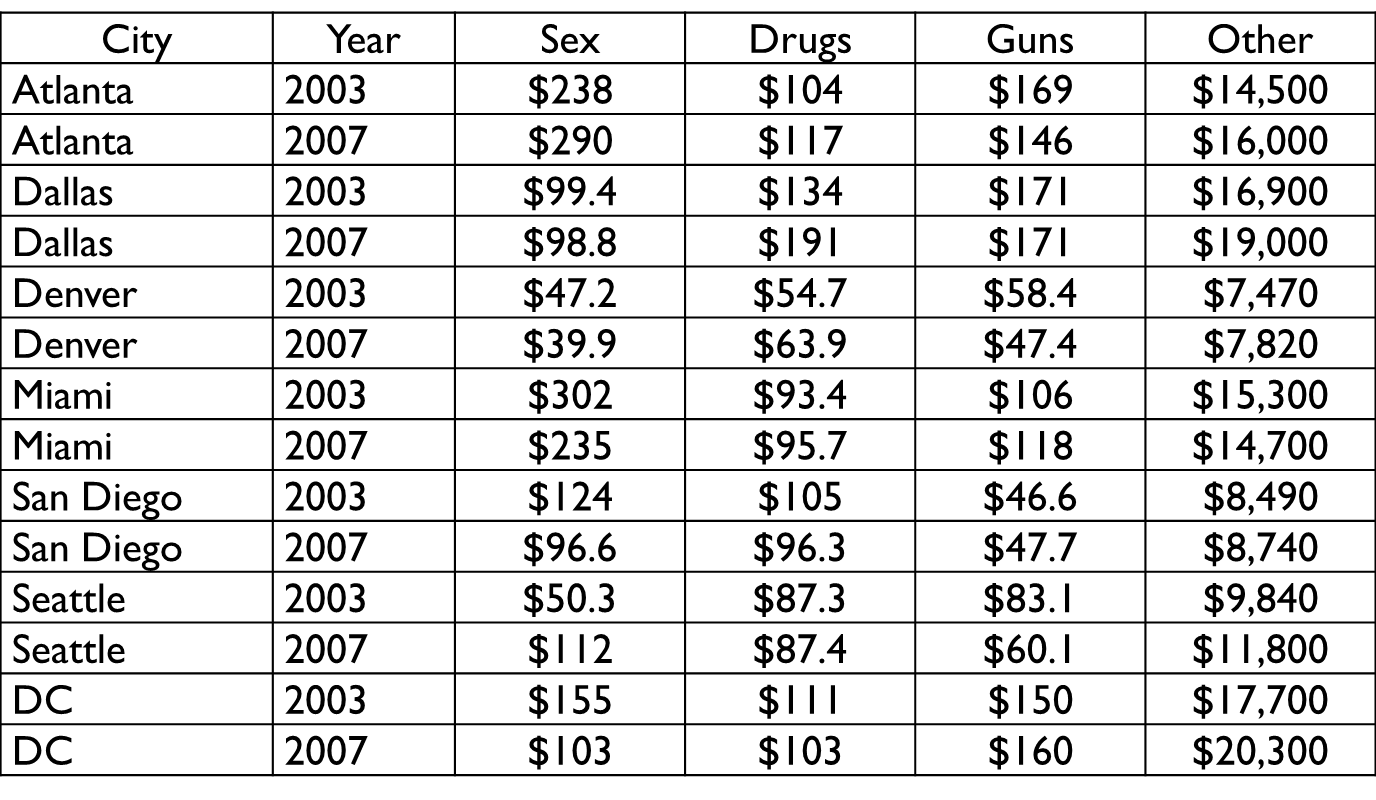- Public Health Approaches for Law Enforcement
- Boston Public Health Commission
- New Report for Sex Trafficking Investigators
- Preventing Officer Suicide
- 2014 Sutin Award Nominations
- CHP Now Open
- CPD and CRI-TA Now Open
- MYVP Initiative Announced
- National Center for Building Community Trust
- Medal of Valor Nominations
Scratching the surface: New report provides insights, recommendations for sex trafficking investigators
 Law enforcement officers who investigate and prosecute pimping and sex trafficking crimes sometimes feel that their efforts are “just scratching the surface” of the problem. This is because the underground commercial sex economy in the United States is large, sophisticated, and complex. The sex trade brought in $39.9 million in Denver and $290 million in Atlanta in 2007 alone, and involves people from every background imaginable, entering it for different and sometimes complicated reasons. Given the variety of actors and sophisticated networks involved, many jurisdictions simply don’t have the resources to address the full scope of the problem.
Law enforcement officers who investigate and prosecute pimping and sex trafficking crimes sometimes feel that their efforts are “just scratching the surface” of the problem. This is because the underground commercial sex economy in the United States is large, sophisticated, and complex. The sex trade brought in $39.9 million in Denver and $290 million in Atlanta in 2007 alone, and involves people from every background imaginable, entering it for different and sometimes complicated reasons. Given the variety of actors and sophisticated networks involved, many jurisdictions simply don’t have the resources to address the full scope of the problem.
New research from the Urban Institute now provides a blueprint for law enforcement on the size and scale of the illicit sex economy, including insights into organized criminal elements, business structures, pimping and trafficking networks, entryways into the trade, and more. Estimating the Size and Structure of the Underground Commercial Sex Economy in Eight Major US Cities, released on March 12, compiles firsthand accounts from 260 interviews with law enforcement personnel, individuals who engaged in past sex work, and individuals charged and convicted for crimes including compelling prostitution, human trafficking, and engaging in a business relationship with sex workers.
The 350-page comprehensive report documents how the trade operates today and how it has changed over the last decade, due in large part to the expansion of the Internet. It provides law enforcement personnel—from veteran investigators, to practitioners, to frontline law enforcement officers—with a better practical understanding of the underground commercial sex economy and offers recommendations for sex trafficking investigations.
These include:
- Cross-train drug-, sex-, and weapons-trade investigators to better understand circuits and overlaps.
- Offer law enforcement trainings for both victim and offender interview techniques, including identifying signs of psychological manipulation.
- Increase awareness among school officials and the general public about the realities of sex trafficking to deter victimization and entry into the community.
- Continue using federal and local partnerships to disrupt travel circuits and identify pimps.
- Consistently enforce the laws for offenders, to diminish low-risk perception.
- Provide comprehensive services for sex trafficking victims.
- Educate policymakers to create the political will to address the full scale of the problem.

The problem is too enormous and complex for one agency to handle, and stakeholders must work together through task forces and other collaborative efforts to effectively investigate and prosecute trafficking cases. Even though we’re just scratching the surface, we now have a blueprint that can help inform strategic resource allocations, intervention, and prevention efforts.
Meredith Dank
Senior Researcher
Urban Institute
Detective Bill Woolf
Community Resources Division
Fairfax County (VA) Police Department
Public Health Approaches for Law Enforcement | Boston Public Health Commission | New Report for Sex Trafficking Investigators | Preventing Officer Suicide | 2014 Sutin Award Nominations | CHP Now Open | CPD and CRI-TA Now Open | MYVP Initiative Announced | National Center for Building Community Trust | Medal of Valor Nominations
